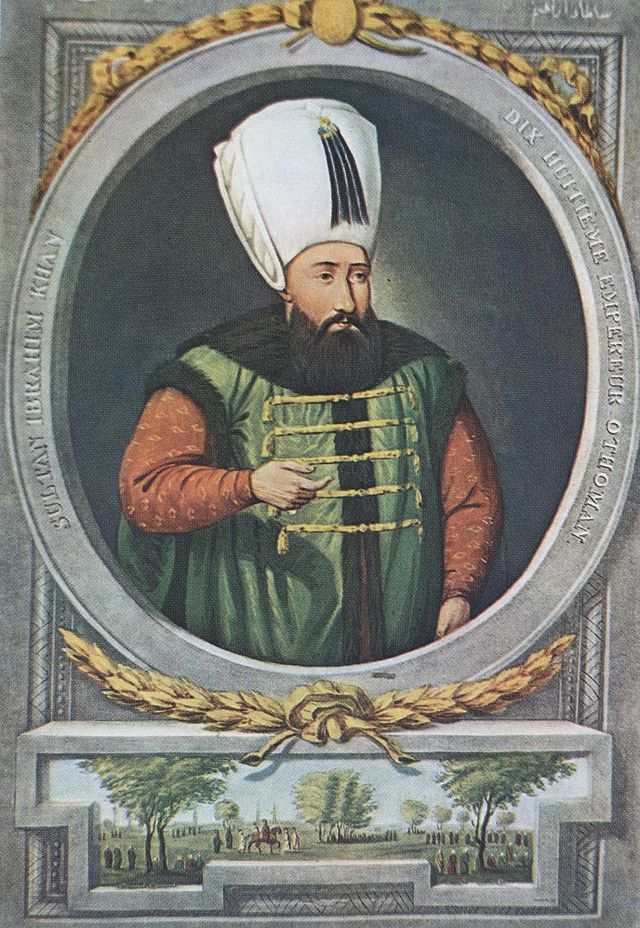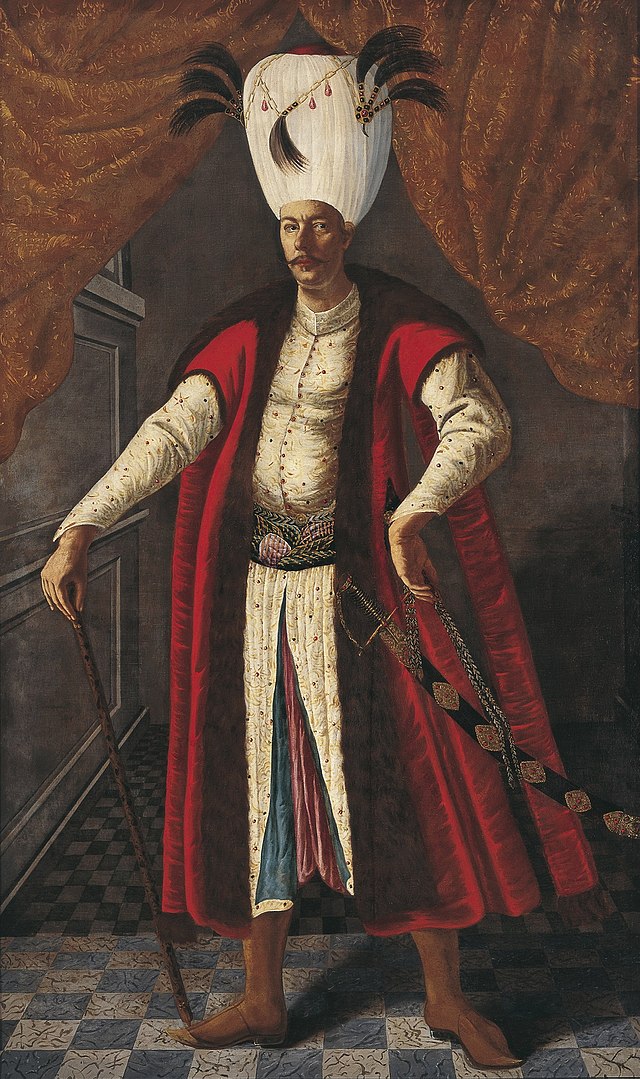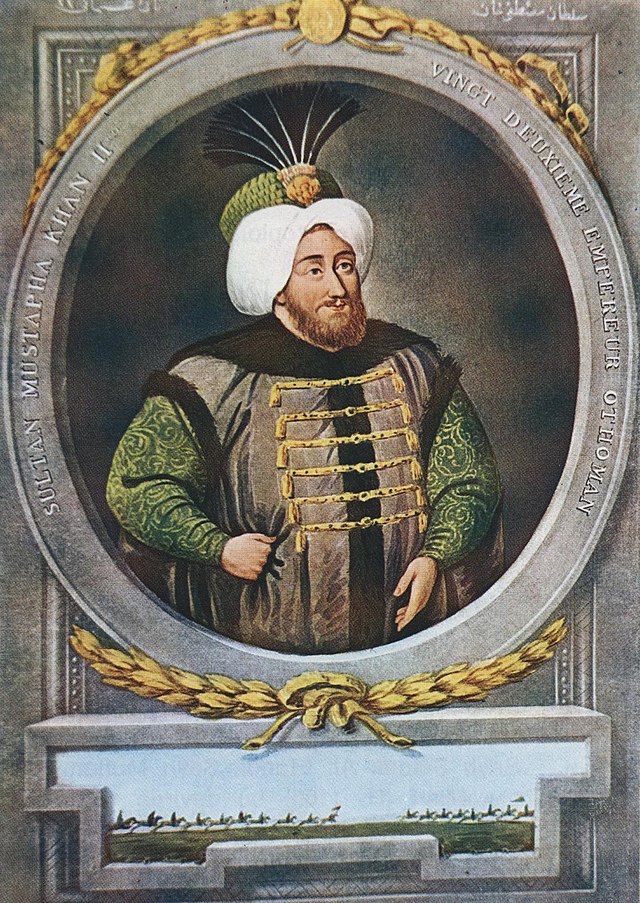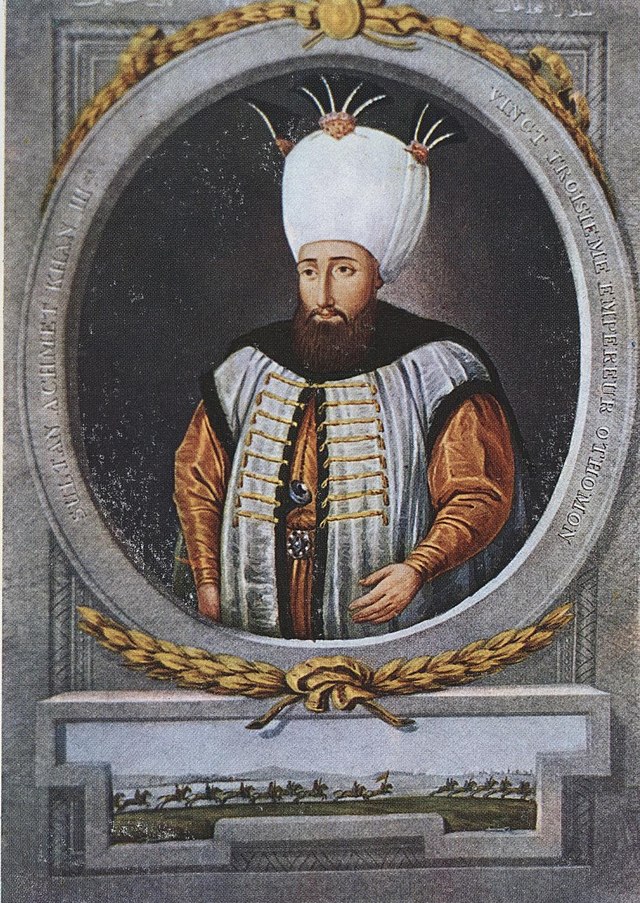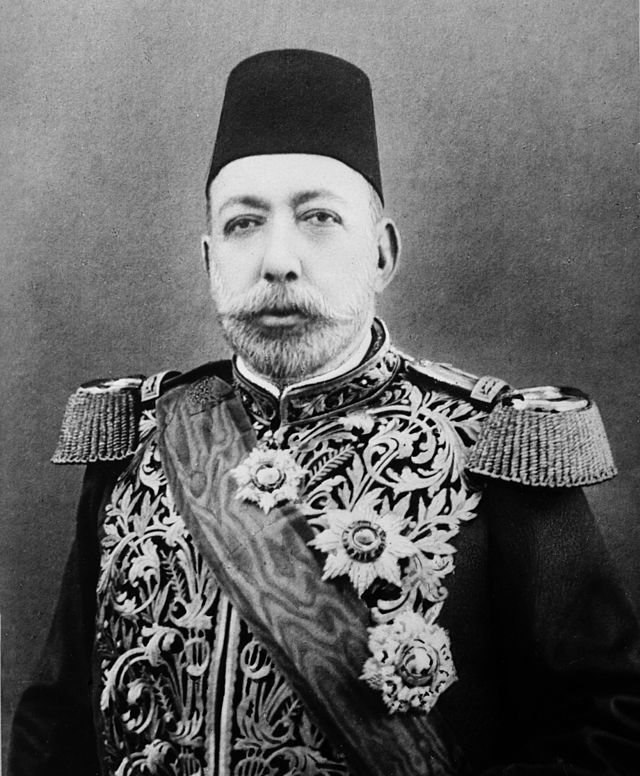Top Qs
Timeline
Chat
Perspective
List of caliphs
From Wikipedia, the free encyclopedia
Remove ads
A caliph is the supreme religious and political leader of an Islamic state known as the caliphate.[1][2] Caliphs (also known as 'Khalifas') led the Muslim Ummah as political successors to the Islamic prophet Muhammad,[3] and widely recognised caliphates have existed in various forms for most of Islamic history.[4]
The first caliphate, the Rashidun Caliphate, was ruled by the four Rashidun caliphs (Arabic: الخلفاء الراشدون, lit. 'Rightly Guided Caliphs'), Abu Bakr, Umar, Uthman and Ali, who are considered by Sunni Muslims to have been the most virtuous and pure caliphs. They were chosen by popular acclamation or by a small committee, in contrast with the following caliphates, which were mostly hereditary.[5] On the other hand, Shiites only recognise Ali and consider the first three caliphs to be usurpers.
The Rashidun caliphate ended with the First Fitna, which transferred authority to the Umayyad dynasty that presided over the Umayyad Caliphate, the largest caliphate and the last one to actively rule the entire Muslim world.[6]
The Abbasid Revolution overthrew the Umayyads and instituted the Abbasid dynasty which ruled over the Abbasid Caliphate.[7] The Abbasid Caliphate was initially strong and united, but gradually fractured into several states whose rulers only paid lip service to the caliph in Baghdad. There were also rivals to the Abbasids who claimed the caliphates for themselves, such as the Isma'ili Shia Fatimids, the Sunni Umayyads in Córdoba and the Almohads, who followed their own doctrine. When Baghdad fell to the Mongols, the Abbasid family relocated to Cairo, where they continued to claim caliphal authority, but had no political power, and actual authority was in the hands of the Mamluk Sultanate.
After the Ottoman conquest of Egypt, the Abbasid caliph Al-Mutawakkil III was taken to Constantinople, where he surrendered the caliphate to the Ottoman Sultan Selim I. The caliphate then remained in the House of Osman until after the First World War. The Ottoman Sultanate was abolished in 1922 by the Grand National Assembly of Turkey led by Mustafa Kemal Atatürk. The head of the House of Osman, Abdülmecid II, retained the title of caliph for two more years. However, on March 3, 1924, Atatürk and the Grand National Assembly of Turkey officially abolished the Ottoman Caliphate.
Remove ads
Rashidun Caliphate (632–661)
Remove ads
Umayyad Caliphate (661–750)
Remove ads
Abbasid Caliphate (750–1258)
Summarize
Perspective
During the later period of Abbasid rule, Muslim rulers began using other titles, such as Amir al-umara and Sultan.
Remove ads
Fatimid Caliphate (909–1171) (Additional)
Remove ads
Mamluk Abbasid dynasty (1261–1517)
Summarize
Perspective
The Cairo Abbasids were largely ceremonial Caliphs under the patronage of the Mamluk Sultanate that existed after the takeover of the Ayyubid dynasty.[8][9]
Remove ads
Ottoman Caliphate (1517–1924)
Summarize
Perspective
The head of the Ottoman dynasty was just entitled Sultan originally, but soon it started accumulating titles assumed from subjected peoples.[10][11] Murad I (reigned 1362–1389) was the first Ottoman claimant to the title of Caliph; claimed the title after conquering Edirne.[12]
The Office of the Ottoman Caliphate was transferred to the Grand National Assembly of Turkey which dissolved the office on March 3, 1924, in keeping with the policies of secularism that were adopted in the early years of the Republic of Turkey by its President Mustafa Kemal Atatürk. After the abolition of the Caliphate, the Grand National Assembly of Turkey founded the Presidency of Religious Affairs as the new highest Islamic religious authority in the country.
Remove ads
Other caliphates
Summarize
Perspective
Hasan ibn Ali's caliphate (661)
After Ali was killed, the governor of Syria Mu'awiya led his army toward Kufa, where Ali's son Hasan ibn Ali had been nominated as Ali's successor by his followers in Iraq.[14][15][16] Mu'awiya successfully bribed Ubayd Allah ibn Abbas, the commander of Hasan's vanguard, to desert his post, and sent envoys to negotiate with Hasan.[17] In return for a financial settlement, Hasan abdicated and Mu'awiya entered Kufa in July or September 661 and was recognized as caliph. This year is considered by a number of the early Muslim sources as 'the year of unity' and is generally regarded as the start of Mu'awiya's caliphate.[18][19]
Abd Allah ibn al-Zubayr's caliphate (684–692)
Abd Allah ibn al-Zubayr, a grandson of the first caliph Abu Bakr and a nephew of Aisha, the third wife of Muhammad, led an uprising against the Umayyad Caliphate in 684 CE. He was proclaimed caliph in Mecca. He ruled Mecca and Medina, the most important places in Islam, for about eight years; outlasting three Umayyad rulers: Yazid ibn Muawiyah, Muawiyah ibn Yazid, and Marwan ibn al-Hakam. Islamic scholars consider him to be the rightful caliph instead of Marwan ibn al-Hakam. He was eventually defeated and killed in Mecca in 692 after a six-month siege by general Al-Hajjaj ibn Yusuf.[20]
Talib al-Haqq (747–748)
Caliphate of Córdoba (929–1031)
(Not universally accepted; actual authority confined to Spain and parts of Maghreb)[21][22]
Almohad Caliphate (1145–1269)

(Not widely accepted, actual dominions were parts of North Africa and Iberia)[23][24]

- Abd al-Mu'min 1130–1163
- Abu Ya'qub Yusuf I 1163–1184
- Abu Yusuf Ya'qub 'al-Mansur' 1184–1199
- Muhammad al-Nasir 1199–1213
- Abu Ya'qub Yusuf II 'al-Mustansir' 1213–1224
- Abu Muhammad Abd al-Wahid I 'al-Makhlu' 1224
- Abdallah al-Adil 1224–1227
- Yahya 'al-Mutasim' 1227–1229
- Abu al-Ala Idris I al-Ma'mun, 1229–1232
- Abu Muhammad Abd al-Wahid II 'al-Rashid' 1232–1242
- Abu al-Hassan Ali 'al-Said' 1242–1248
- Abu Hafs Umar 'al-Murtada', 1248–1266
- Abu al-Ula (Abu Dabbus) Idris II 'al-Wathiq' 1266–1269
Hafsid Caliphate (1249–1574)
The Hafsids claimed their descent from Rashidun caliph Omar.[25] After the fall of Baghdad, Marinid sultan Abu Yusuf Yaqub and Sharif of Mecca Abu Numayy recognized the Hafsids in 1258 and 1259 respectively.[26]
Bornu and Songhai Empires (15th/16th century)


Several rulers of West Africa adopted the title of Caliph. Mai Ali Ghaji ibn Dunama was the first ruler of Bornu Empire to assume the title. Askia Mohammad I of Songhai Empire also assumed the title around the same time.[27]
Indian caliphates (late medieval/early modern)
Since the 12th century, despite the South Asian domination of numerous Muslim empires, kingdoms and sultanates, Islamic caliphates were not fully attempted to be established across the Indian subcontinent. However, under the sharia based reigns of Sunni emperors such as Alauddin Khalji, Mughal Empire's Aurangzeb, and Mysore's rulers Hyder Ali and Tipu Sultan, absolute forms of caliphates clearly appeared. These largely impacted the French-Italian emperor Napoleone Bonaparte and soldiers of the British Empire.[28][29][30][31]
Sokoto Caliphate (1804–1903)

(Not widely accepted, actual dominions were parts of West Africa)
Established by Tariqa Islamic scholar and religious leader Usman dan Fodio through the Fulani War (alternatively known as the Fulani Jihad), which sought to reduce the influence of pre-Islamic religious practices and spread a more vigorous form of Islam through the auspices of a Caliphate.
Ahmadiyya Caliphate (1908–present)

The Khalīfatul Masīh (Arabic: خليفة المسيح; Urdu: خلیفہ المسیح; English: Successor of the Messiah), sometimes simply referred to as Khalifah (i.e. Caliph, successor), is the elected spiritual and organizational leader of the worldwide Ahmadiyya Muslim Community and is the successor of Mirza Ghulam Ahmad, who had taken the titles of Mahdi and Messiah of Islam.[nb 2] The Caliph is believed to be divinely guided and is also referred to by members of current Khalifatul Masih is Mirza Masroor Ahmad.
After the death of Ghulam Ahmad, his successors directed the Ahmadiyya Muslim Community from Qadian in Punjab, British India, which remained the headquarters of the community until 1947 with the independence of Pakistan. From this time on, the headquarters moved to and remained in Rabwah, a town built on land bought in Pakistan by the community in 1948. In 1984, Ordinance XX was promulgated by the government of Pakistan which rendered the Khalifatul Masih unable to perform his duties and put the very institution in jeopardy. Due to these circumstances, fourth Khalifatul Masih Mirza Tahir Ahmad left Pakistan and migrated to London, England, provisionally moving the headquarters to the Fazl Mosque.[35]
Sharifian Caliphate (1924–1925)

In March 1924, when the Ottoman Caliphate was abolished, Hussein bin Ali, King of Hejaz proclaimed himself Caliph. An attempt at restoring the caliphal office and style following the abolition of the Ottoman Caliphate was made by Hussein bin Ali, King of Hejaz and Sharif of Mecca, who assumed both on 11 March 1924 and held them until 3 October 1924, when he passed the kingship to his son Ali bin Hussein, who did not adopted the caliphal office and style.[36] Like the Fatimid caliphs, he was a descendant of Muhammad through a grandson of Hasan ibn Ali. Hussein's claim for caliphate was not accepted by the Wahhabi and Salafi movements, and in 1925 he was driven from Hejaz by the forces of Ibn Saud as an outcome of the Second Saudi-Hashemite War. He continued to use the title of caliph during his remaining life in exile, until his death in 1931.
In October 1924, facing defeat by Ibn Saud, he abdicated and was succeeded as king by his eldest son Ali bin Hussein. After Hejaz was subsequently completely conquered by the Ibn Saud-Wahhabi armies of the Ikhwan, on 23 December 1925, Hussein surrendered to the Saudis, bringing the Kingdom of Hejaz, the Sharifate of Mecca and the Sharifian Caliphate to an end.[nb 3][37]
Islamic State (2014–present)
On 29 June 2014, the Islamic State, more commonly known as ISIS, proclaimed the return of the Islamic caliphate, with Abu Bakr al-Baghdadi as its first caliph and Amir al-Mu'minin.[38][39] The caliphate's claimed territory at its peak controlled 12 million people. At its height, ISIS ruled territories in various countries including Iraq, Syria, Lebanon, Nigeria, Libya, the Philippines, Afghanistan, Congo, Yemen, and the Sinai region in Egypt, in addition to running guerrilla cells in many other countries.[40] In 2014–15, dozens of Salafi Jihadi groups[41] and scholars[42] around the world pledged allegiance to ISIS-claimed Caliphate. On 10 April 2018, during a rally of U.S. President Donald Trump in Elkhart, Indiana in support of Mike Braun’s bid for the US Senate, Vice President Mike Pence referred to ISIS as a Caliphate, claiming "ISIS is on the run, their Caliphate has crumbled, and we will soon drive them out of existence once and for all."[43] ISIS severely degraded in operational capability, subscribers and territorial control during the military intervention in Iraq and Syria by the U.S.-led Global Coalition to Defeat Daesh, and in Syria by the Russian military intervention.[44] As of early 2022, ISIS occupies some territory in Nigeria and has 3 million people under its rule;[45] and also it continues to maintain control over some rural uninhabited areas in both Iraq and Syria[46][47]
Remove ads
Notes
- Abdulmejid II, the last Ottoman Caliph, lacked a tughra of his own, since he did not serve as head of state (that position being held by Mustafa Kemal, President of the newly founded Republic of Turkey) but as a religious and royal figurehead.
- The legitimacy of his Caliphate is disputed; however, the date of end can be assigned to his loss of the Haramayn, in 1925 or to his death, in 1931. Both interpretations can be found in sources.
Remove ads
References
Bibliography
Wikiwand - on
Seamless Wikipedia browsing. On steroids.
Remove ads













































